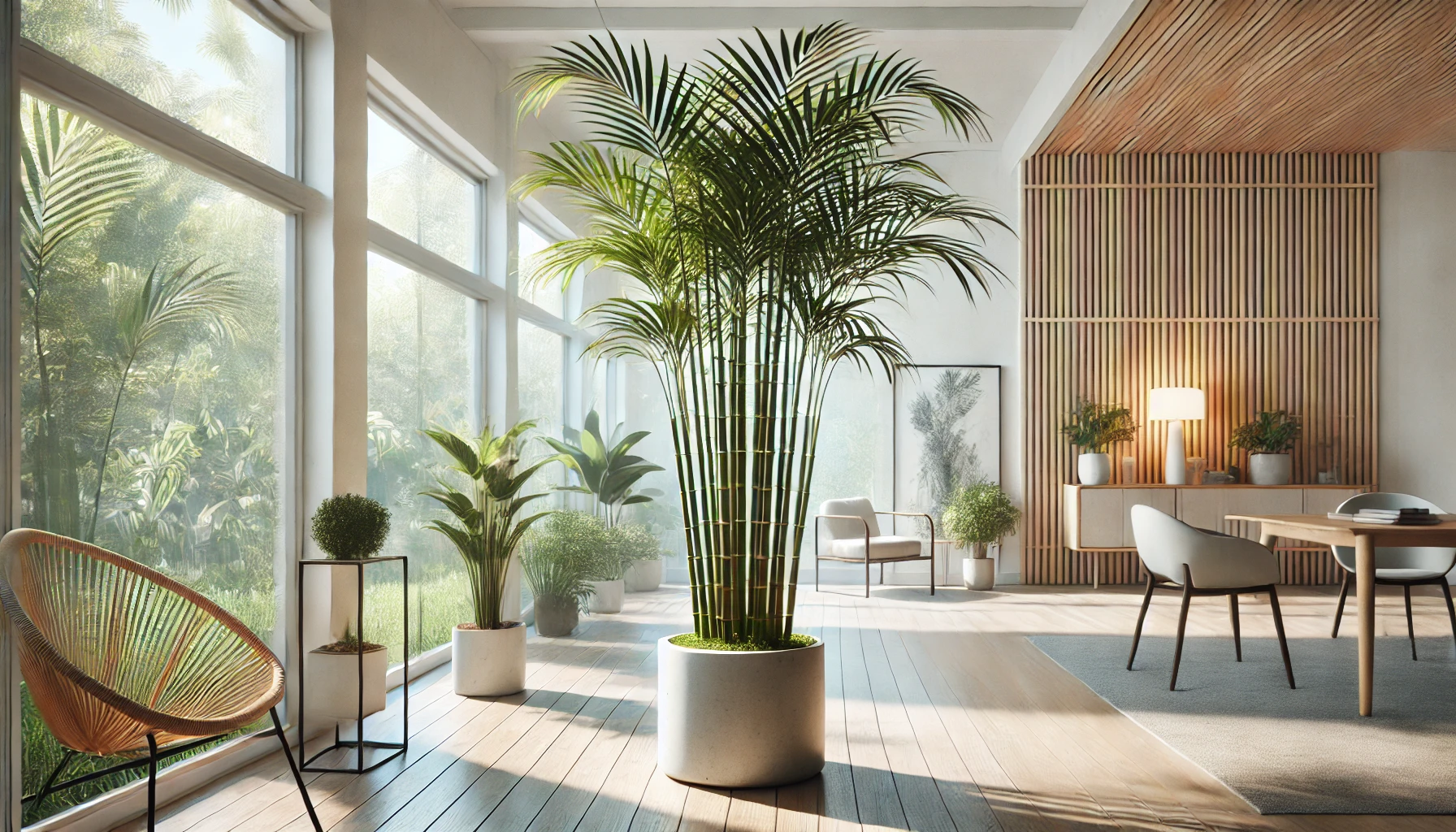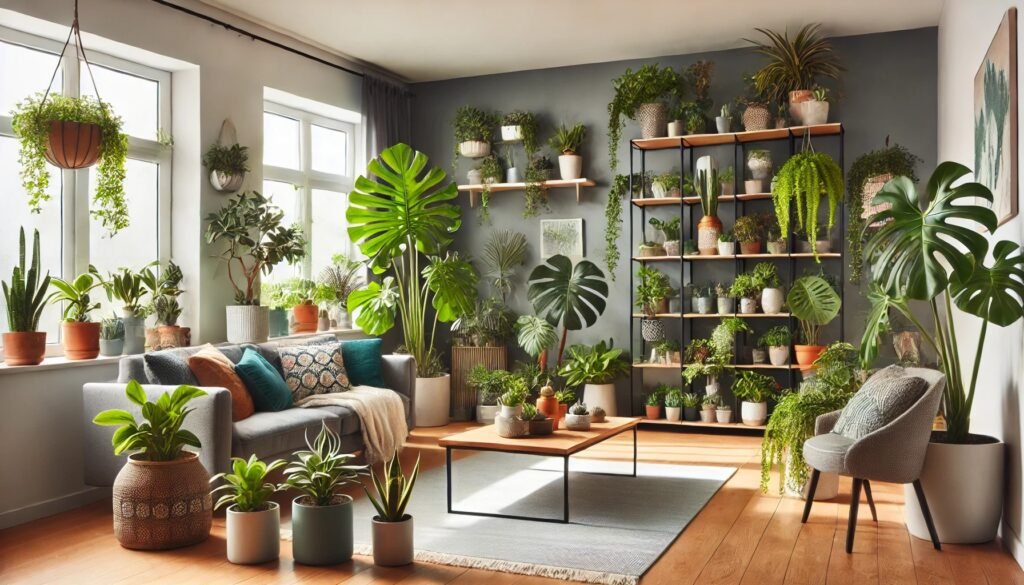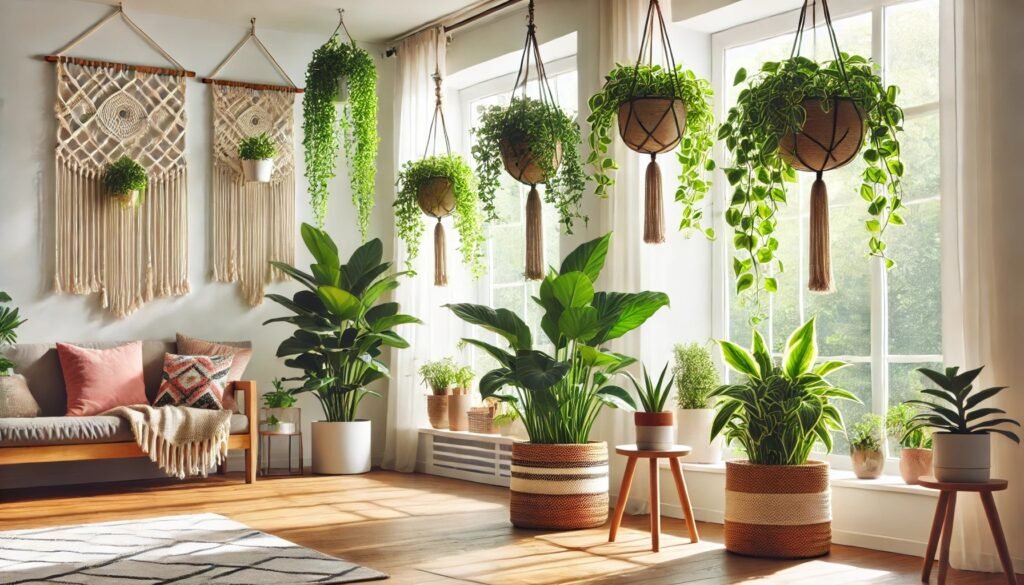
If you’re looking for a plant that brings a touch of the tropics to your home while also purifying the air, look no further than the Bamboo Palm. Also known as Chamaedorea seifrizii, this resilient and elegant plant is the perfect addition to any small space. With its tall, graceful stalks and lush green fronds, the Bamboo Palm adds a sophisticated and calming presence to any room.
But the Bamboo Palm is more than just a pretty plant. It’s a powerhouse when it comes to improving indoor air quality, making it a must-have for anyone looking to create a healthier living environment. Let’s dive into what makes the Bamboo Palm such an excellent choice for your home, how to care for it, and the benefits it brings to your space.
The Beauty and Benefits of the Bamboo Palm
A Tropical Touch in a Compact Package
The Bamboo Palm may be known as a giant, but don’t let that fool you into thinking it’s too big for your home. In fact, this plant is perfectly suited for small spaces, thanks to its vertical growth habit. Instead of spreading outwards, the Bamboo Palm grows tall, reaching up to seven feet in height, making it an ideal choice for corners or narrow spaces where a horizontal plant might not fit.
Its slender, bamboo-like stems are topped with feathery fronds, creating a light and airy appearance. This elegant look can complement a wide range of interior styles, from modern and minimalist to bohemian and eclectic. The Bamboo Palm’s ability to thrive in low-light conditions also makes it an excellent choice for spaces that don’t get a lot of natural sunlight.
A Natural Air Purifier
One of the most impressive features of the Bamboo Palm is its ability to purify the air. According to studies, including those conducted by NASA, the Bamboo Palm is particularly effective at removing harmful toxins like formaldehyde, benzene, and carbon monoxide from the air. These toxins can be found in everyday items like furniture, household cleaners, and even some cosmetics, making the Bamboo Palm a valuable ally in maintaining a healthy home environment.
By placing a Bamboo Palm in your living room, bedroom, or office, you’re not just adding a touch of greenery—you’re actively improving the air quality around you. This is especially beneficial for those who suffer from allergies, asthma, or other respiratory issues, as cleaner air can lead to fewer symptoms and better overall health.
Caring for Your Bamboo Palm
The Right Light for Your Palm
One of the reasons the Bamboo Palm is so popular is its ability to adapt to different lighting conditions. While it prefers bright, indirect light, it can also tolerate lower light levels, making it a versatile choice for various spots in your home. However, avoid placing it in direct sunlight, as too much sun can scorch its delicate fronds.
If you notice your Bamboo Palm’s leaves turning yellow or brown, it might be getting too much light. On the other hand, if the plant seems to be losing its vibrant green color, it might be craving more light. Moving it to a brighter spot or adding a grow light can help revive its lush appearance.
Watering and Humidity Needs
When it comes to watering your Bamboo Palm, consistency is key. This plant prefers evenly moist soil, so it’s essential to water it regularly without allowing the soil to dry out completely. At the same time, avoid overwatering, as soggy soil can lead to root rot, a common issue for many indoor plants.
A good rule of thumb is to water your Bamboo Palm when the top inch of soil feels dry to the touch. During the warmer months, you may need to water more frequently, while in the cooler months, you can reduce the watering schedule.
Bamboo Palms also thrive in higher humidity, so if you live in a dry climate or use indoor heating, consider increasing the humidity around your plant. This can be done by misting the leaves regularly, placing a humidifier nearby, or setting the pot on a tray filled with water and pebbles.
Feeding and Fertilizing
To keep your Bamboo Palm looking its best, regular feeding is essential. Use a balanced liquid fertilizer every month during the growing season, typically from spring through summer. This will provide the necessary nutrients to support its growth and maintain its lush foliage.
In the fall and winter, when the plant’s growth slows down, you can reduce feeding to every two to three months. Be sure not to over-fertilize, as this can lead to salt buildup in the soil, which can harm the roots.
Pruning and Repotting
While the Bamboo Palm is a low-maintenance plant, occasional pruning can help keep it looking neat and healthy. Trim away any yellow or brown fronds to encourage new growth and prevent pests or diseases. Pruning also allows the plant to focus its energy on producing fresh, green foliage.
Repotting your Bamboo Palm is generally only necessary every two to three years or when it outgrows its current container. When repotting, choose a pot that’s one size larger and has good drainage. Freshen the soil with a well-draining mix, and be careful not to damage the roots during the process.
Bamboo Palm Placement: Where to Put Your Plant
Choosing the Right Spot
The Bamboo Palm’s vertical growth habit makes it ideal for filling empty corners or adding height to your plant collection. Because it can tolerate low light, it’s also a great choice for rooms that don’t get a lot of sunlight, such as bedrooms, bathrooms, or offices.
In the living room, a Bamboo Palm can create a statement piece next to a sofa or in an entryway. Its height and elegant fronds draw the eye upward, making the space feel larger and more open. In the bedroom, placing a Bamboo Palm near a window or at the foot of the bed can add a touch of serenity and natural beauty.
Complementing Other Plants
The Bamboo Palm pairs beautifully with other indoor plants, especially those with different shapes and sizes. For example, placing it next to a trailing plant like a pothos or a small, bushy plant like a peace lily can create an attractive contrast in textures and heights. This not only enhances the visual appeal of your plant collection but also helps create a more balanced and harmonious display.
If you have a collection of succulents or cacti, the Bamboo Palm can add a refreshing touch of green and softness, balancing the more rigid and structured appearance of these drought-tolerant plants.
Common Bamboo Palm Problems and Solutions
Yellowing Leaves
One of the most common issues with Bamboo Palms is yellowing leaves, which can be caused by a variety of factors. Overwatering is the most frequent culprit, so check the soil’s moisture level and adjust your watering routine as needed. If the soil is soggy, allow it to dry out before watering again.
Another possible cause of yellowing leaves is insufficient light. If your Bamboo Palm isn’t getting enough light, try moving it to a brighter spot or supplementing with a grow light.
Brown Leaf Tips
Brown tips on the leaves are usually a sign of low humidity or fluoride in the water. To increase humidity, you can mist the leaves regularly or use a humidifier. If you suspect fluoride is the issue, try using distilled or rainwater for watering.
Pests and Diseases
Like all indoor plants, the Bamboo Palm can occasionally fall victim to pests such as spider mites, mealybugs, or scale insects. Regularly inspecting your plant for signs of infestation can help you catch and treat problems early. If you notice any pests, wipe the leaves with a damp cloth or treat the plant with an insecticidal soap or neem oil.
Diseases are less common but can occur if the plant is overwatered or if the soil doesn’t drain well. Ensuring proper watering practices and using a well-draining soil mix can help prevent these issues.
Final Thoughts
The Bamboo Palm is truly a remarkable plant. Its ability to thrive in low-light conditions, combined with its air-purifying qualities, makes it an excellent choice for any home. Whether you’re looking to add a touch of the tropics to your living space or improve the air quality in your home, the Bamboo Palm is a versatile and easy-to-care-for plant that won’t disappoint.
By following the care tips outlined in this guide, you can enjoy a healthy and thriving Bamboo Palm that will bring beauty and freshness to your space for years to come. So why not bring a little slice of paradise into your home with this air-purifying giant? Your indoor environment will thank you for it.
Stay connected with the world of plants! Subscribe to Phylofy for expert gardening tips, DIY projects, and eco-friendly inspiration. Join our community and nurture your love for nature. Don’t miss exclusive content and updates. Subscribe now!



